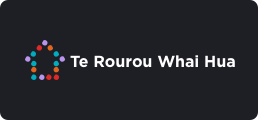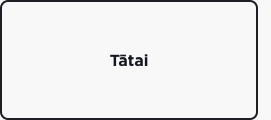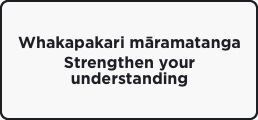4. Support your mahi (Tātai)

|
The tools and resources in this section build on the ones in 'strengthen your understanding' section. There will be resources in that section that you can use too as you work with teams to plan supports. |
||
Integrated Tiered Support ModelAs you are your teams plan supports to meet the learning and wellbeing needs of ākonga, you will be able to make connections across the tiers. You may ask yourselves:
|
||
Planning tools |
||
Supporting changeThis grid outlines 7 conditions for effective change. As an LSC you may be part of a team that is planning for change across a school or cluster. Often these type of plans involve a number people contributing to the change. Understanding each of these conditions may help the team ensure that plans are robust, thoughtful and considerate of the varied knowledge, experiences and perspectives people bring to the mahi. Adapted from Villa and Thousand (2000) |
||
| Clearly articulated and agreed goals can focus the delivery of interventions and action plans. Clear goals can ensure coherence and continuity across different professionals (such as educators) and different settings (such as home and early learning service, school or Māori medium kura). - He Pikorua | ||
Goals and outcomesOutcomes reflect what teams hope to achieve and help them to know when they have been successful. Outcomes will be dependent on what LSC and the teams have learned through whakawhanaungatanga, kohikohi and āta whakaaro. When planning for universal supports, targeted support, individualised support or for all three, there are useful tips for identifying outcomes:
|
||
|
Shelley Moore rethinks SMART goals In Shelley's video she defines SMART goals as: Strength-based - using strengths to build on next learning steps. Presumes competence 'I can...' Meaningful - reflects what's important to ākonga and their whānau Authentic - related to everyday activities and routines Responsive - connected to language, culture and identity Triangulated - capturing learning in multiple ways |
||
Learning support plansCollaboration for Success guidelines can support LSC working together with kaiako and whānau around learning support planning. Whānau are an integral part of the team. Their contribution and participation is invaluable so you may ask yourselves 'how are our teams ensuring that there is a balance of power - how are whānau playing an equitable part in planning for their ākonga?' In the guidelines there is a section on setting IEP goals. The team sets IEP goals that:
The format of an IEP is not prescribed. There are many models and approaches for developing learner support plans. When thinking about an approach to use you will consider:
See IEP Online for more information about the IEP process and download an example of an IEP template. |
||
Learning MapsLearning maps support ākonga, kaiako, whānau and school leaders plan what to change about a learning situation. Ākonga can reflect on and improve their learning situations with the support of kaiako and whānau by drawing pictures of how they see their interactions within learning contexts. They can analyse their 'web of interactions' and plan for changes they would want to see in their learning experiences. |
||
|
Learning maps can be:
Download more information about learning maps |
||
PATHPATH: Planning Alternative Tomorrows with Hope PATH is a planning tool that has team members start by imagining and then detailing a future that a person or team aspires to. The team then works backward to what they consider should be the first steps towards achieving the future envisioned. When embraced fully, PATH shares the balance of power throughout the team which is culturally responsive. |
||
Everyone's in
This tool can support LSC to work alongside individual or groups of kaiako to plan their classroom programme in ways that work for all of your ākonga, from the outset. It builds on their professional knowledge of inclusive practice within the New Zealand Curriculum (NZC). Inclusion involves working together to know and value every student, and to meet their learning needs. By using this tool to plan LSC and kaiako will:
|
Click on the image to go to the tool |
|
Universal Design for Learning
The following tools can support you to plan using a UDL framework. |
||
|
Download key questions to consider when planning lessons. Download useful tips for developing learning goals. Download a step by step planner |
Six steps in the UDL thinking cycle can help guide teams in the planning process. These UDL aligned strategies are instructional methods and tools used by kaiako to ensure all ākonga have an equal opportunity to learn. |
|
|
Reflective Questions:
|
||
|
To access resources and links to 'strengthen your understanding' of tātai click on the tab below. |
||
![11412 [UDL-thinking-cycle.jpeg]](https://inclusive-live-storagestack-assetstorages3bucket-3uty0hejzw6u.s3.ap-southeast-2.amazonaws.com/public/inclusive-education/example-images/UDL-thinking-cycle__ScaleMaxWidthWzEwODZd.jpeg)



